
План открытого урока
Предмет: английский язык
Дата: 14.10.2010
Класс: 8 «Б»
ФИО учителя: Ланглиц Т.В.
Тема урока: «The environment and you»
Тип урока: Урок закрепления знаний.
Цель урока: формировать навыки чтения, а также контроль усвоения лексических единиц и использования их в речевых блоках.
Задачи урока:
Образовательные:
ü расширение кругозора учащихся
ü формирование умения выделять положительное и отрицательное
Воспитательные:
ü воспитание доброго отношения к природе, нетерпимости к разрушению жизни на земле
ü воспитание заинтересованного отношения ко всему, что происходит вокруг нас, умения оказывать помощь, не оставлять человека в беде.
Развивающие:
ü формирование активной жизненной позиции, желания быть полезными своей стране, своему городу, школе, в которой ты учишься, своей семье.
Практические:
ü развитие навыков всех видов речевой деятельности с использованием ИКТ.
Оборудование: компьютер, интерактивная доска (презентация «We are the children of our planet»; яблоко; карточки со словами, листы с текстом слайда.
Ход урока
Организационный момент
- Good morning, children. I’m very glad to see you today. How are you?
- How do you usually spend your weekends?
- What do you usually buy at the market?
Вступительная беседа учителя
- Yesterday I also went to the market to buy some food and fruit. And today I’ve brought one apple at the lesson. Look at it! Isn’t it wonderful? Try to use your imagination to think what the apple looks like?
 Слайд 1 – Изображение Земли.
Слайд 1 – Изображение Земли.
- Yes, I can’t but agree, that the apple reminds us of the Earth. And now look! I cut the apple into four parts (quarters).
- 3 parts of the Earth’s surface is water and only 1 part is a land.
- Now I take the part representing land and cut it into 2 parts.
- Look only 1 half of the land is habitable. The rest part of land is deserts, mountains, frozen ice and other places where people can’t live.
- And now I take the piece that represents the habitable land and cut it into 4 sections. Only 1 of these parts (of the Earth’s habitable land) is where all Earth’s food comes from.
- Now look at 3 parts of the Earth, which represent the water. Less than 1% of the Earth water is fresh and drinkable. And most of this water is stopped down (tied up) in the atmosphere (clouds) and underground.
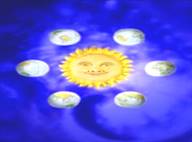
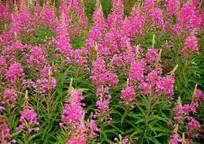
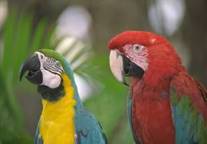 Слайд 2 – Картинки с красотой
природы
Слайд 2 – Картинки с красотой
природы
- Nature is everywhere around us. You can see o lot of wonders around you: the blue sky, green grass, sunny valleys, snow-covered mountains, ribbons of rivers, deep seas and oceans.
- Please, look at these pictures and answer the question: What does nature mean for you?
(Предположительные ответы: the Sun, the Moon, the stars, our Earth, plants, animals and birds).
- Today we are going to start discussing Earth’s problems from reading a small fairy – tale. Look at the screen!
Слайд 3 - Сказка о природе и человеке
Once upon a time there lived MEN and NATURE. They lived on the EARTH in great harmony.
NATURE helped MEN to hunt, to fish, to grow food and to build many things. The time went on. Once MEN built many factories, plants, different cars and machines, electric power stations and many other things. All these things were very dangerous for NATURE because of their waste. That is why NATURE felt ill. Since that time the situation has been changing to the worst.
Now NATURE has different diseases. They all are called ECOLOGICAL PROBLEMS.
- Now pay your attention to the question under the text. Read it and try to answer.
Question: How do you understand the words “to live in harmony with nature”
(Предположительные ответы:
P.1: It’s clean rivers, the blue sky, and green grass.
P2: Clean air and water, the shining sun, fresh fruit from the trees, green trees.
Слайд 4 – Стихотворение
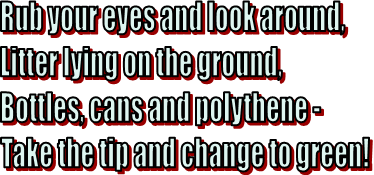
 |
- There are many poems about ecological problems. Today you have an opportunity to acquaint with one of them. These words will help you to understand this poem better. Let’s read and translate them. Listen to the poem carefully and try to answer the question: What diseases does the Nature have?
- And now listen to the poem very attentively and try to understand it. There you can see some new words. You have papers with these words on your desks. Take these papers, read and translate these words. And let’s read this poem together.
Слова на карточках: litter, rub, tip, polythene, smoke, choke, breath
 Слайд 5 - Список проблем
Слайд 5 - Список проблем
![j0104534[1]](https://fs.znanio.ru/8c0997/21/24/10231da6a6dd6494adbef499e902dc5de6.png) |
||||||
 |
||||||
- And now let’s compare your answers with ecological problems. Look at the next slide. Here you can see the list of main environmental problems. Let’s read them and translate. Listen to me and repeat after me, please.
Дети повторяют за учителем, а затем читают словосочетания самостоятельно.
![]() На
партах есть листы с текстом слайда, все слова с транскрипцией.
На
партах есть листы с текстом слайда, все слова с транскрипцией.
Слайд 6 -
 |
|||
 |
|||
 - Today you will learn about some
eco problems. The first problem is destruction of wild life. Every 10 minutes
one kind of animals, plants or insects disappears. If nothing is done about it,
over one million species will disappear in 20 years from now. The man kills
animals and birds, destroys their houses and nests, cut down forests, and
poisons insects.
- Today you will learn about some
eco problems. The first problem is destruction of wild life. Every 10 minutes
one kind of animals, plants or insects disappears. If nothing is done about it,
over one million species will disappear in 20 years from now. The man kills
animals and birds, destroys their houses and nests, cut down forests, and
poisons insects.
Слайд 7 -
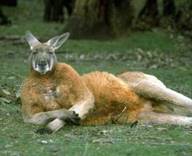 |
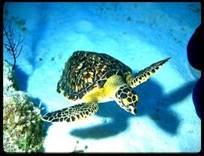 |
 |
Red kangaroo Green sea turtle Lowland gorilla
![]() - Look at the next slide. Here you can see the
pictures of some endangered species of animals. Look at these pictures and name
these animals. As you remember your home task was to find the names of
endangered animals. (Ученики
по одному называют животных, птиц, рыб).
- Look at the next slide. Here you can see the
pictures of some endangered species of animals. Look at these pictures and name
these animals. As you remember your home task was to find the names of
endangered animals. (Ученики
по одному называют животных, птиц, рыб).

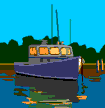
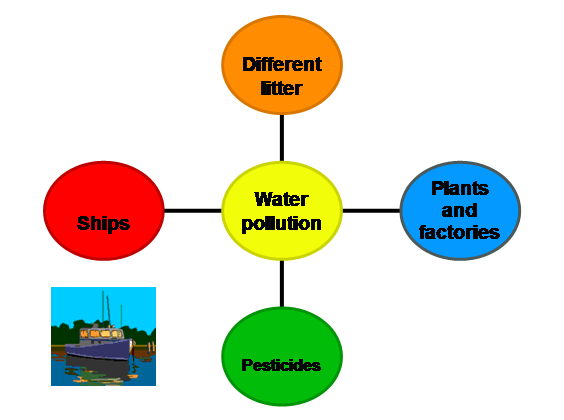 Слайд 8 -
Слайд 8 -
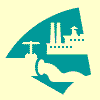 |
|||
 |
|||
![]() - The next ecological problem is water pollution. Look
at this diagram. There are many kinds of water pollutions. Ships, pesticides,
plants and factories, different litter are caused water pollution.
- The next ecological problem is water pollution. Look
at this diagram. There are many kinds of water pollutions. Ships, pesticides,
plants and factories, different litter are caused water pollution.
Слайд 9 –
- Let’s read some information about water pollution.
The waste from factories and industrial plants, electric and atomic power stations pours into lakes, rivers and seas .
Many ships sail in the ocean water. They lose oil and trash, that’s why the oceans and seas become dirty.
Fishermen catch fish which is dangerous for our health.
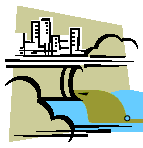 |
- And now answer the question: What makes the water dirty?
![]() ( Примерный ответ:
Ships, factories, plants and litter make the water dirty.)
( Примерный ответ:
Ships, factories, plants and litter make the water dirty.)
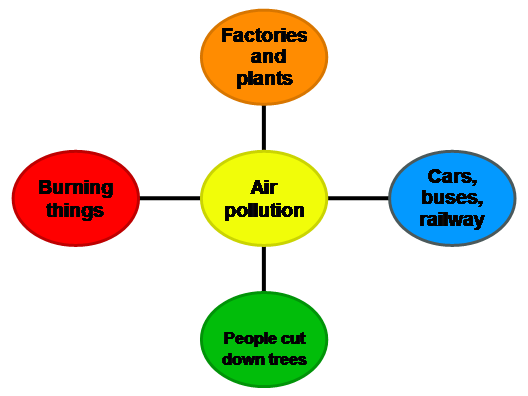 Слайд
10
-
Слайд
10
-
![j0250259[1]](https://fs.znanio.ru/8c0997/5e/3a/e2e14cbdd1f64450c3cd292916e34f3af0.png) |
 |
|||||
 |
||||||
 |
||||||
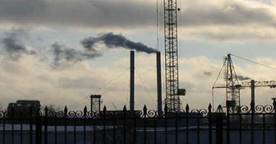 -
Now it’s time to speak about next important problem. It is Air pollution. The
main reasons (causes) of water pollution are factories and plants, transport,
burning things, destruction of forests. Everybody can see smoke coming out the
tall factory chimneys. In cities and towns thousand of cars add tones poisonous
substances into the air.
-
Now it’s time to speak about next important problem. It is Air pollution. The
main reasons (causes) of water pollution are factories and plants, transport,
burning things, destruction of forests. Everybody can see smoke coming out the
tall factory chimneys. In cities and towns thousand of cars add tones poisonous
substances into the air.
Слайд 11 – Air pollution
- Look at our next slide and read the information about air pollution.
- Every year the world’s industries pollute the atmosphere with about 1,000 million tons of dust and other substances. Factories and plants dump industrial waste into the air. The by-products of their activity pollute the air we breath. Cars and buses put a lot of smoke into the air. There are too many cars nowadays. They do a lot of harm to our city atmosphere and ruin the beauty of the countryside because many new roads are built everywhere
 Please answer the question:
Where does air pollution mostly come from?
Please answer the question:
Where does air pollution mostly come from?
Слайд 12 –
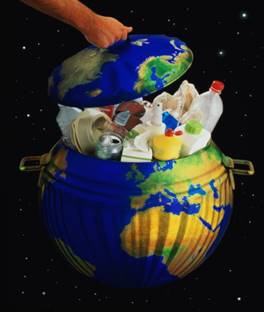
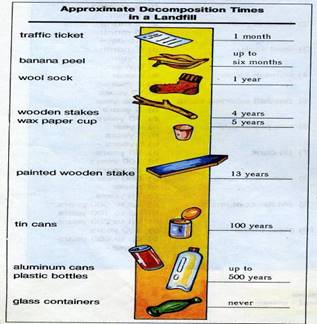
- And the last eco problem of our lesson is littering. I think the littering is the most complicated problem. In our region there are not enough special litter stations to reuse and recycle litter.
- Imagine that we are in the underground country. What can we see around us? In this fairy country many animals and insects live. Oh, have a look. What else can we see there? (Показываю на мусор) (P: We can see bottles, cans, paper, banana peels…..) Yes, you are right. And all these things are litter. They can be in the land for a long time.
 - The bus ticket will disappear in
1 month. Banana peels will disappear in 6 months. Wool socks can lie in the
ground for 1 year. Wax paper cup will disappear only in 5 years. And the time
of plastic bottles disappearing is 500 years.
- The bus ticket will disappear in
1 month. Banana peels will disappear in 6 months. Wool socks can lie in the
ground for 1 year. Wax paper cup will disappear only in 5 years. And the time
of plastic bottles disappearing is 500 years.
 - We must remember that our planet
is not litter bin. (переход к следующему
слайду)
- We must remember that our planet
is not litter bin. (переход к следующему
слайду)
Слайд 13 –
- We are the children of our planet and we are responsible for the health (future) of our planet. Each of us must do everything possible to keep the land, air and water clean.
- Please make up your sentences using this table and answer the question: How can people help our planet?
- feed birds and animals
- plant trees
We should - buy recyclable cans and bottles
- recycle paper
- organize national parks
- keep the environment clean
- cut down trees
- litter
We must not - hunt animals
- dump litter in the rivers, seas
- disturb nests
- spoil the countryside
- pick flowers
![]()
Слайд 14 -
- At the end of our lesson let’s sing a song “Don’t kill the world”
Don’t kill the world!
Don’t let the Earth down!
Don’t destroy the ground!
Don’t kill the world!
Don’t kill the world!
Don’t let the Earth die!
Help to survive!
Don’t kill the world!
Слайд 15 – Home task .
Make your own projects
”How can we help our planet”
- Well done, pupils. Write down your home task. I think this task will be interesting for you. Our lesson is over. Good bye!
![j0199277[1]](https://fs.znanio.ru/8c0997/1f/d7/371820878b215e690e46619f089b10985a.png) |
Материалы на данной страницы взяты из открытых источников либо размещены пользователем в соответствии с договором-офертой сайта. Вы можете сообщить о нарушении.